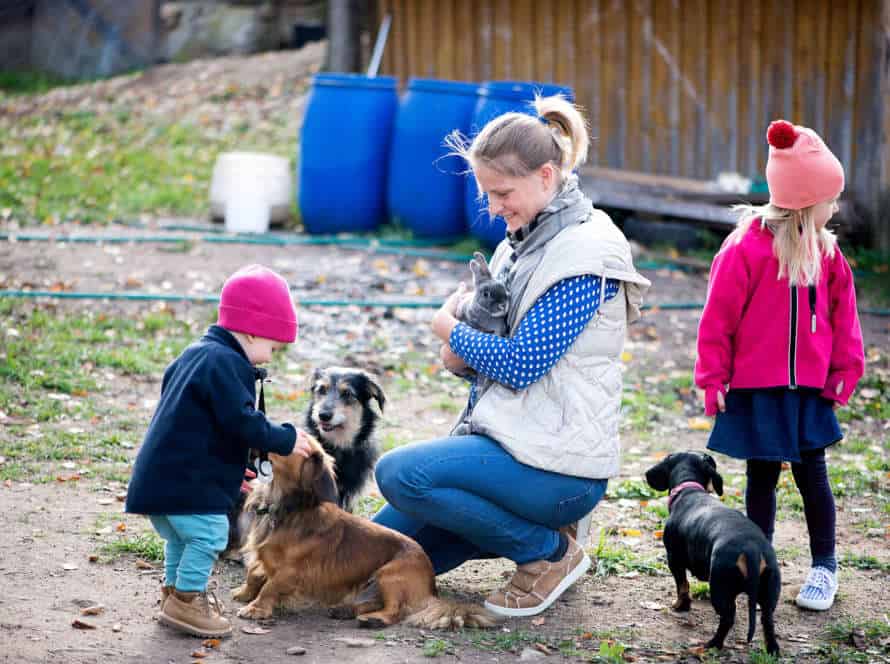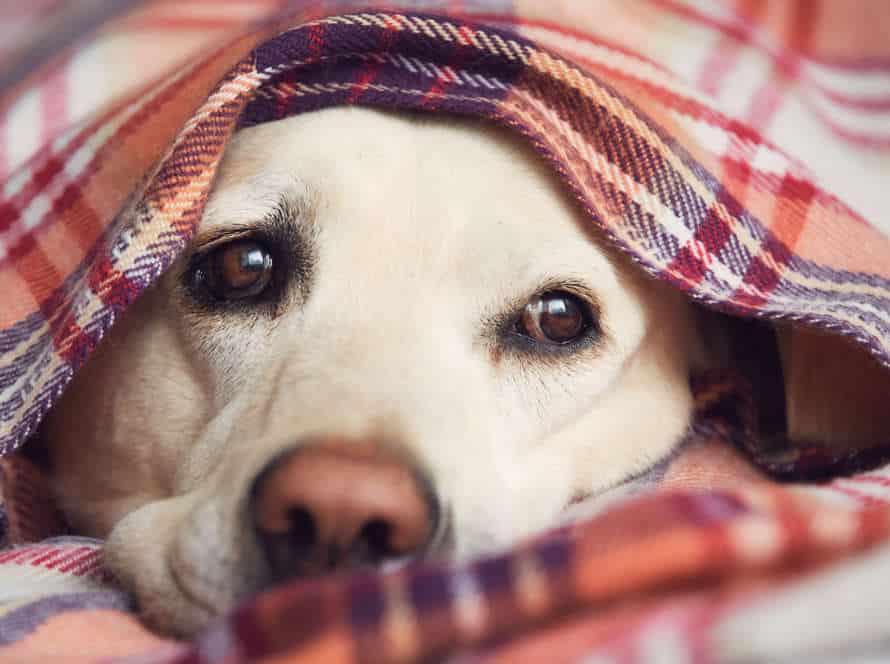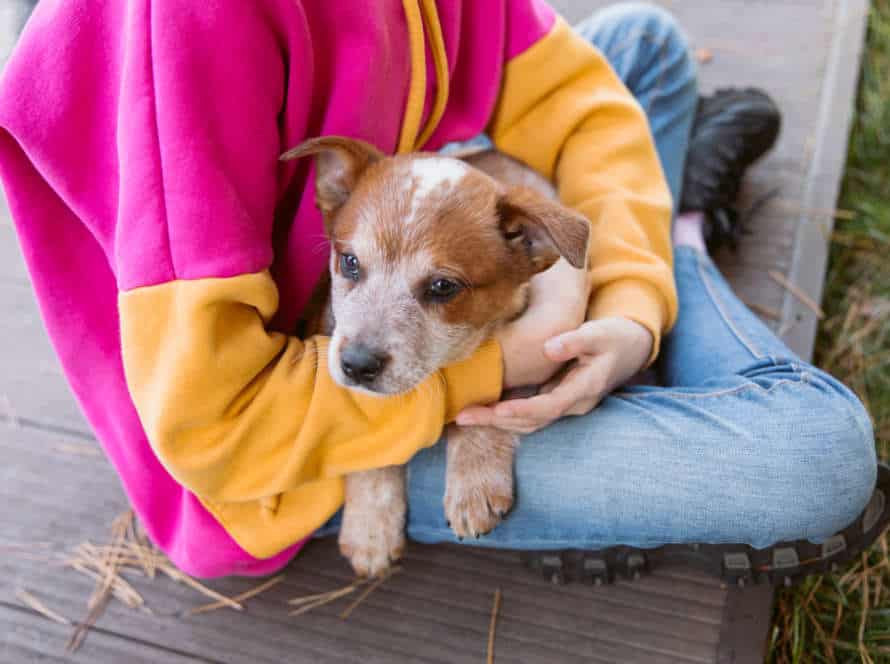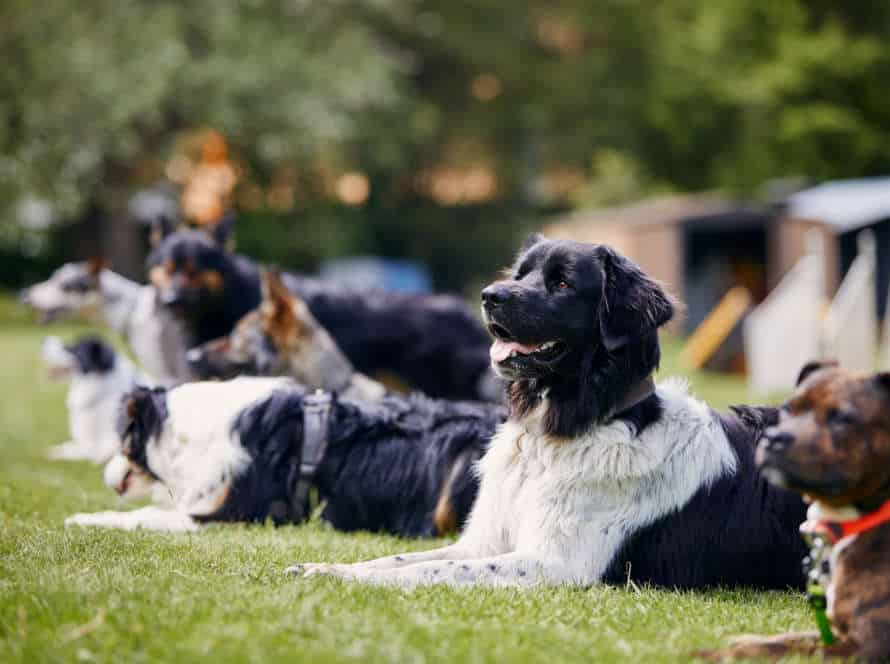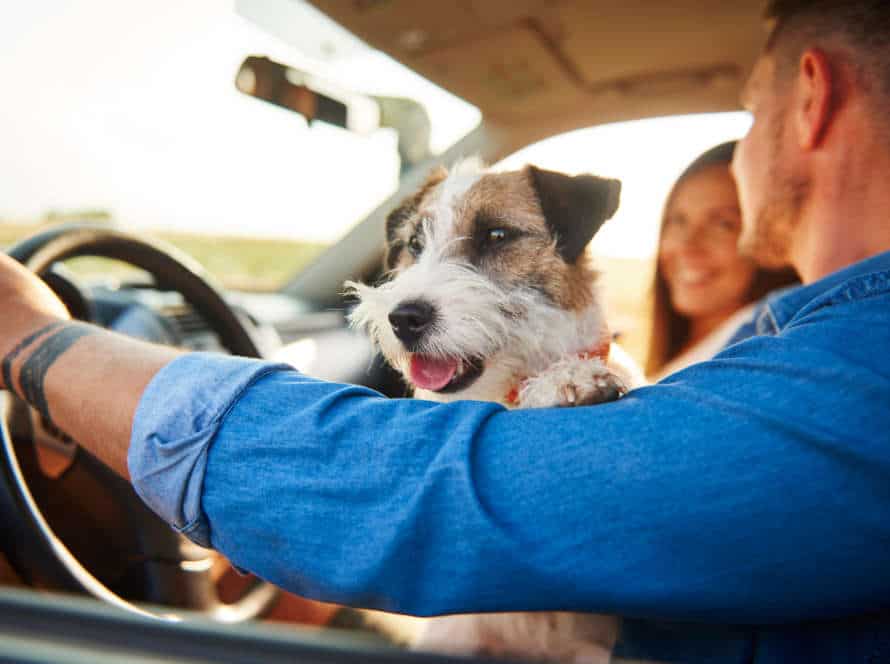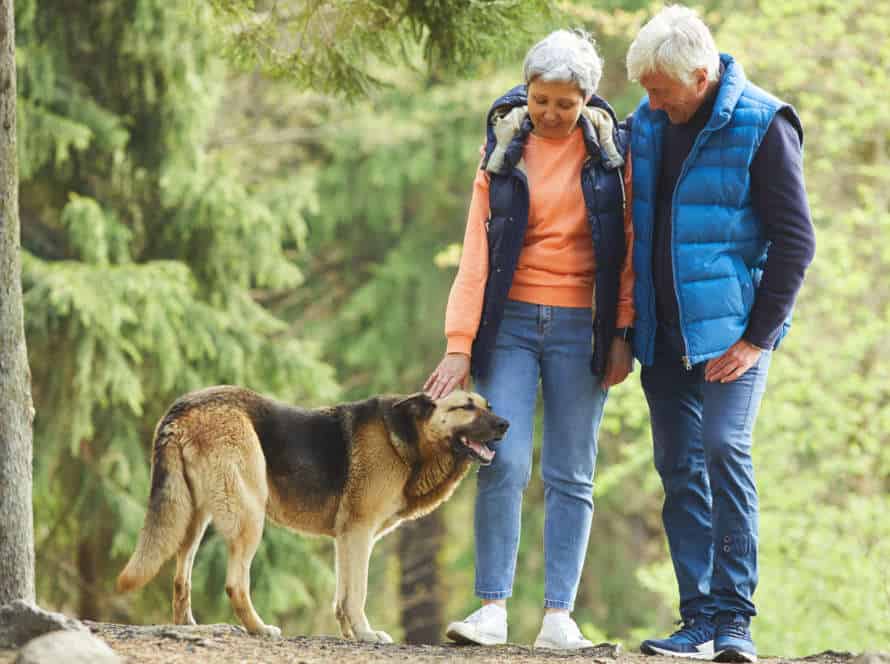Introducing Your Puppy to Children: Tips for a Positive Experience
Introducing your puppy to children can be a fun experience! To make sure it’s safe and positive, here are some tips:
- Gradual introduction: Give brief, regular supervised interactions between your puppy and children. Increase duration as your puppy becomes more comfortable.
- Teach children: Show kids how to interact with your puppy in a gentle, calm, and safe way. No sudden movements, respect their space, and no loud noises.
- Positive reinforcement: Reward your puppy when they show calm and positive behavior around kids. Use treats, praise, and playtime.
- Manage interactions: Always watch your puppy and children together. Intervene if needed to stop any rough or aggressive behavior.
With patience and care, your puppy can become a loving and sociable companion for children.
Preparing your Puppy for the Introduction
Introducing your new pup to children? What a hoot! Let’s make sure it’s safe and comfy for all. Priority numero uno: prepare your puppy. This’ll help the process go smoother and make it fun for all!
Basic Puppy Training
Training your puppy is a must for a happy and content pup. Before introducing them to children, make sure you prepare them. Here are some tips:
- Let them socialize with humans and other dogs to help create a trusting and confident pup.
- Teach basic commands like sit, stay and come – this will strengthen their bond with you and ensure they obey.
- Crate training is a great way to give them a sense of safety.
- Positive reinforcement techniques such as treats, playtime and praise will encourage good behaviour.
When your pup is ready, remember these tips for a successful interaction:
- Teach kids how to properly approach a puppy and get permission for petting.
- Stay calm and supervise the interaction to avoid bad behaviour.
- Reward your puppy for positive behaviour to reinforce it.
A well-trained pup will bring joy to any family!
Socialization
Socializing your pup is key for their growth. It helps them to trust and be confident around people and other animals. To have a positive experience with intro and kids, use these tips:
- Start early. Introduce your pup to new people, places and experiences when they’re young.
- Use positivity. Give praise, treats or toys when your pup behaves well in social situations with children.
- Supervise. Always keep an eye on your pup during interactions with kids. Make sure they don’t get too rough or scared.
- Set boundaries. Teach your pup gentle play and limits with other children and animals.
- Be patient. Give your pup time and space to get used to new people and situations. Don’t make them do anything they don’t want to.
Desensitizing your Puppy
Desensitizing your pup is essential for readying them to meet kids. Use these tips for a great experience:
- Start off slow: Introduce your puppy to tranquil, well-mannered children first to guarantee a good experience.
- Reward your pup: Give treats, compliments, and other positive reinforcements when they act calmly around children.
- Progress gradually: Increase the number of children your pup interacts with and the time of the interactions gradually.
- Supervise: Always watch your puppy when near children for their protection.
- Lead by example: Demonstrate proper behavior around kids to encourage the same from your pup.
- Conditioning: Utilize conditioning methods to associate good experiences with being around children.
- Training: Teach your pup to obey commands to avoid jumping, biting, or other behavior that could hurt children.
Preparing the Children
Meeting a pup? Wow, cool! Get ready for loads of fun! Preparation is key – both pup and child. Here are some tips to help the kids!
- Make sure they know the do’s and don’ts.
- Explain to them how to approach the pup.
- Demonstrate how to pet him gently.
- Show them how to interact nicely.
- Let them know that treats are ok, but only sometimes!
- Lastly, encourage them to be kind.
Now, go out and have a blast!
Teaching Children about Dog Safety
Teaching kids about dog safety is a must. Introducing your pup to children is a key step. Here are some tips for a positive experience:
- Basic introduction: Show kids how to approach a pup gently and quietly. Let the puppy come to them. Teach them to pet it softly and not grab its ears, tail, or fur.
- Warning signs: Teach children to recognize when a pup is unhappy – barking, growling, or baring teeth. They must leave the pup alone if they see these signs.
- Respect the pup’s space: Show kids to respect the pup’s space by not disturbing them while resting or eating.
- Supervise always: Always supervise when children and puppies or dogs interact. Never leave them unsupervised.
By following these tips, you can help create a great relationship between your pup and kids, keeping everyone safe and happy.
Pro Tip: Teach your children about responsible dog ownership. Inspire them to do tasks like feeding and walking the pup. This can help them build empathy and love for animals.
Setting Boundaries and Rules
Introducing a new pup to kids can be exciting and nerve-wracking. It is essential to set boundaries and rules. Here are some tips:
- Make rules with kids, like no hitting or pulling tails and no disturbing the puppy’s nap time.
- Teach kids to pet and interact with the pup correctly, like stroking its back instead of face or paws.
- Set boundaries for the pup, like crate training and off-limit rooms or areas.
- Supervise interactions between kids and the pup to prevent accidents and ensure good behavior.
These boundaries and rules will help both the kids and pup have a great relationship.
Helping Children Understand Puppy Body Language
Youngsters may not get the body language of puppies, which can lead to issues or injury. Teaching children about puppy body language is essential, particularly when a pup is joining a family with little ones.
Here are some tips for presenting your puppy to children and making sure a pleasant experience:
- Instruct children to spot fear or worry in a puppy’s body language, like growling, snarling, or biting.
- Help kids understand that a pup needs its own space and may not always wish to play.
- Show children how to slowly and calmly move near the pup, avoiding swift movements and loud noises.
- Demonstrate how to pet the puppy carefully and where to touch, such as under the chin or on the back.
- Always be present during interactions between kids and puppies, and never leave them alone.
- Utilize positive reinforcement to reward the puppy for good behavior around children.
By helping children comprehend and respect a puppy’s limits and conduct, a secure and positive experience can be assured for both the youngsters and the pup.
Making the Introduction
Bringing a puppy home to meet the kids can be daunting. To make sure all feel safe, it’s essential to have a positive experience. Preparing and introducing cautiously is the key. Here are the tips that make your puppy’s meeting with the family super smooth:
- Prepare the family in advance. Start by going over the rules with the kids, such as not grabbing at the puppy or teasing it. Let them know what to expect when the puppy arrives.
- Set up a safe space for the puppy. This will allow the puppy to feel secure and have a place to retreat to when feeling overwhelmed.
- Introduce the puppy slowly. Allow the puppy to approach family members on their own terms, and supervise interactions closely to ensure safety for both the children and the pet.
- Encourage positive interactions. Teach kids to interact with the puppy gently and positively, such as by offering treats or playing gentle games.
- Be patient. It may take time for the puppy to feel comfortable around the family, so be patient and take things at their pace.
Setting the Scene for the Introduction
Introducing a pup to kids can be both exciting and nerve-wracking. But with the right prep, it can be a positive experience. Here’s how:
- Be sure your puppy is relaxed with you.
- Pick a calm spot where the pup feels safe.
- Let the kids play a role, like offering treats or petting the pup.
- Monitor the interaction and intervene if needed.
Supervising the Introduction
Introducing your pup to kiddos can be amazing, but only if you supervise it properly. Here are a few tips to make sure it goes well:
- Begin Slowly: Gradually let the pup meet children, one at a time. Let the pup approach them on its own terms.
- Teach proper handling: No jumping, roughhousing or anything aggressive. Show kids how to pet the pup gently, not pulling tails or ears.
- Supervise constantly: Don’t let the child be with the pup alone. Always be there and step in if things go wrong.
- Reward good behaviour: Applaud your pup each time it interacts nicely with children. This will help them stay friendly.
The key is supervision, consistency and patience. One pro tip – Give your pup private areas in the house where it can go if it feels uncomfortable.
Encouraging Calm Behaviors
Introducing your pup to kiddos can be a nerve-wracking experience for both pooch and kids. However, there are ways to promote peaceful behaviors and make the introduction a positive one for all. Here are some tips:
- Begin with a managed setting: Introduce your pup to children in a tranquil, controlled location with little disruption.
- Utilize positive reinforcement: Reward your pup when they behave calmly, like sitting quietly or sniffing gently.
- Instruct kids on how to interact with the pup: Show kids to slowly and calmly approach the pup, and to evade activities that may frighten or intimidate it, like abrupt movements or loud sounds.
- Monitor interactions: Always be present when your pup and children interact to make sure it’s safe and positive.
Pro tip: Socializing your pup early is key to making sure they’re relaxed and composed around all ages. Start with short encounters, gradually boosting time and intensity of exposure, while constantly rewarding desirable behavior.
Handling Common Situations
Introducing your puppy to your kids can be both exciting and nerve-wracking! It is important to handle common scenarios carefully to make sure both your pup and your family members are safe, secure and comfortable. Here are some tips to create a positive experience for everyone and handle common situations with ease:
Addressing Fear and Anxiety
Introducing a puppy to kids can be tricky. But, with the right attitude and steps, it can be great! Here are some tips:
- Introduce your pup to well-behaved kids in a safe place. Keep them on a leash. Give them treats and praise for good behavior.
- Show children how to interact with your pup – like not pulling their ears or tail and not running up to them.
- Supervise all interactions to avoid any bad experiences.
- Make training fun and short to prevent overwhelming anyone.
- With patience and work, introducing your pup to kids is a great way to socialize them and teach them skills.
Pro Tip: Reward your pup with treats and praise when they are good around children.
Handling Dominance Behaviors
Puppies can show dominance behaviors, like growling, biting, and nipping. These need to be managed when introducing them to children. Here are some tips:
- Teach your pup simple commands like sit, stay, come, and heel.
- Socialize your pup from an early age, exposing them to many people and places.
- Employ positive reinforcement, using praise and treats to reward good behavior.
- Show the children how to interact correctly with your pup. No chasing, pulling, or teasing.
- Avoid situations that could trigger dominance behaviors, like taking away food or toys.
By following these steps, you can keep things positive when introducing your pup to children and prevent any dominance-related issues.
Preventing Aggressive Behaviors
Introducing your pup to kids can be exciting and nerve-wracking! Here are some tips for a successful interaction and to prevent aggressive behaviors:
- Start gently: Let your pup become used to the sound and sights of kids before introducing them.
- Supervise: Always watch your pup’s interactions with kids to ensure their safety.
- Positive reinforcement: Reward good behavior with treats and affection.
- Set limits: Teach kids the boundaries when dealing with your pup to avoid aggression.
Follow these and you can ensure a positive experience for pup and children alike!
Positive Reinforcement and Reward-Based Training
Families are now inviting puppies into their homes! They are introducing them to the kids and teaching them important life skills like proper conduct around children.
Positive reinforcement and reward-based training are two great tools for owners. They can help train and socialize puppies, as well as creating a good experience. This section explains how to use these methods. It also explains why they are important for a lasting bond between puppies and children.
Using Positive Reinforcement to Encourage Positive Behaviors
Positive reinforcement is a great training technique to promote positive behaviors. It does this by offering rewards or incentives. When introducing your puppy to children, using positive reinforcement will make it a positive experience for both. Here’s some tips:
- Give rewards for good behavior: Treats, praise or toys when your pup behaves well with kids. This will keep your pup motivated to do the same.
- Make sure everyone speaks the same language: This way the pup knows exactly what is expected of them and responds accordingly.
- Crate train the pup: Before introducing to children, crate training is important. This provides a stress-free place for your pup while they adjust to new behaviors.
Using positive reinforcement, you can set up a good relationship between children and puppies. Pro-Tip: It works with people too!
Rewarding Good Behavior
Positive reinforcement and reward-based training are great for rewarding your dog’s good behavior. Especially when introducing them to children. Here’s how to use it:
- Treats – Give your dog a treat when they do something good, like coming when called, sitting, or staying calm around kids.
- Verbal praise – Say things like “good boy/girl” or “well done” to encourage the behavior you like.
- Playtime – Play games with your pup when they do something right.
Remember, positive reinforcement and reward-based training are a great way to shape your dog’s behavior. It will create a positive experience for everyone!
Avoiding Punishment-Based Training Techniques
Punishment-based training is bad for your pup’s emotional and mental health. It can cause long-term behavioral issues. So, go for positive reinforcement and reward-based training when introducing your pup to kids. Here are some tips:
- Start off slow. Introduce your pup to kids in a secure place, like your home, and with grown-up supervision.
- Praise and give treats when your pup behaves well with kids.
- Never leave your pup with kids, especially toddlers or infants, without an adult watching.
Positive reinforcement and reward-based training can be a great way to teach your pup good behavior. It also helps build a strong bond between you and your pup!
Frequently Asked Questions
Q: How can I introduce my puppy to children?
A: Start by teaching your puppy some basic commands such as sit, stay and come. Gradually introduce them to children by having them sit calmly and wait before meeting. Supervise all interactions to ensure positive experiences.
Q: What age is appropriate to introduce a puppy to children?
A: It’s best to wait until your puppy is at least 6 months old and has had all their vaccinations. This ensures that they are healthy and have learned some basic obedience skills.
Q: What should I do if my puppy becomes frightened or aggressive around children?
A: Immediately remove your puppy from the situation and give them some space to calm down. Work on socializing them in a controlled environment with positive reinforcement. Seek the help of a professional dog trainer if necessary.
Q: How can children help with puppy socialization?
A: Children can help by feeding the puppy, playing gentle games and being calm and patient. Encourage them to interact in a positive and supervised manner.
Q: Can a puppy be too young to interact with children?
A: Yes, it’s important to wait until your puppy is at least 8 weeks old before they interact with children. During those first few weeks, puppies need to bond with their mother and littermates.
Q: How can I teach my puppy to be gentle with children?
A: Consistently reinforce gentle behavior by using positive reinforcement training techniques. Teach them to be calm around children and reward good behavior with treats and praise.


